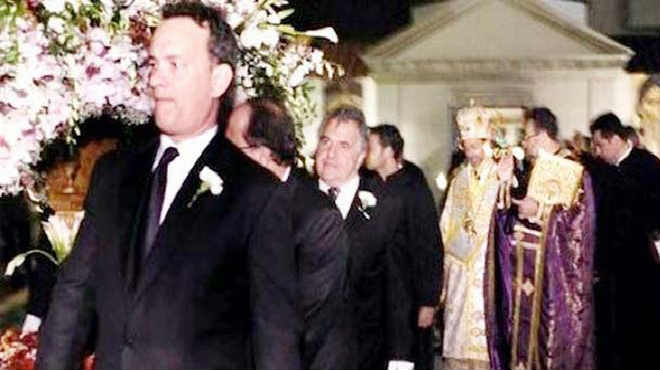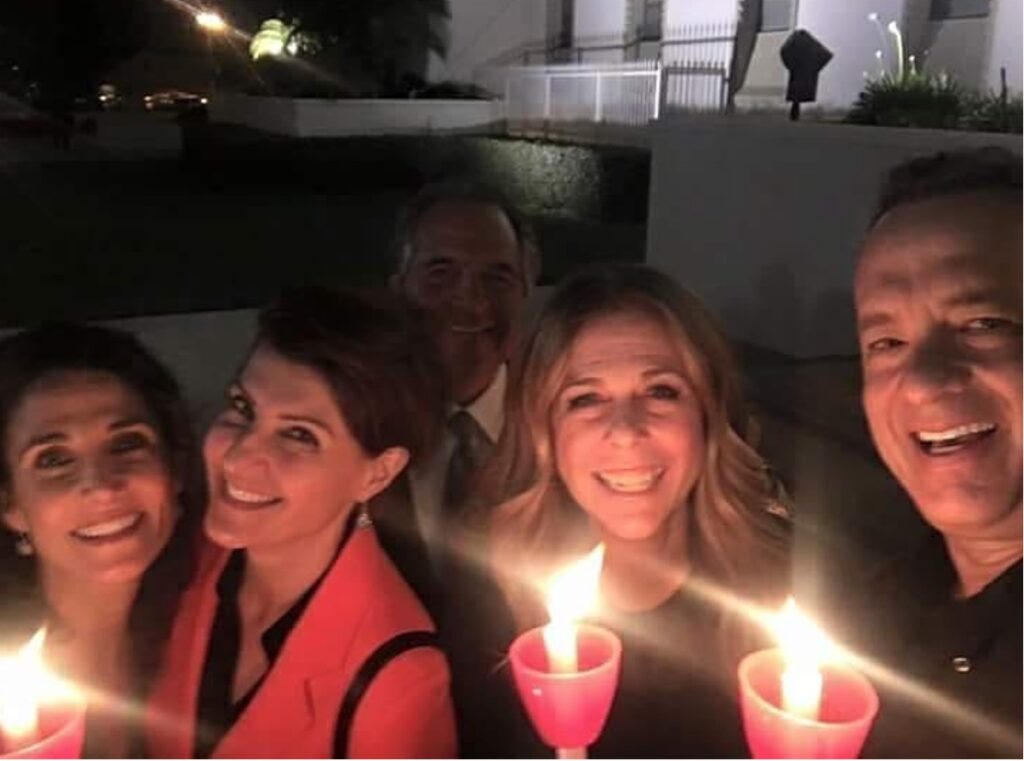Christ is risen! Truly He is risen!

Here are a number of things related to this great Feast,
1) Midnight Paschal Resurrection Service, Paschal Matins and Divine Liturgy
After a short “Midnight Office”, the church is darkened, all candles are extinguished, and we are in the tomb with Our Lord and God Jesus Christ. One candle at the Altar is lighted, the Paschal Candle which will be burning at every service for the next Forty Days.
From that Candle, all the peoples’ candles are lighted, and we process out the front door to bring the Resurrection to the world. *
- Here in Wisconsin, our weather has ranged from warm and calm, to windy, to rain, to sleet, to snow.
The Gospel Mark 16:1-8 is read: Just before dawn the Myrrhbearing Women come to the tomb to find the stone rolled away, and an angel tells them “Do not be alarmed. You are looking for Jesus the Nazarene, who was crucified. He is not here. He has risen!”
Matins/Orthros begins, and for the first time we sing “Christ is risen from the dead, trampling down death by death, and upon those in the tombs bestowing life!”
The priest knocks three times on the church door: “Lift up your gates, and the King of Glory shall come in!” *
- This probably isn’t the time to tell you about the year the church doors got stuck, and I kept knocking and nothing happened, till finally I cried “Let us in!” Eventually they did. (Happily, that has not become part of our parish tradition.)
And then we all enter the church to begin what Father Alexander Schmemann described as “an explosion of joy”. The tower bells are ringing. The church is now fully lighted, including as many candles as we can find (a whole lot in an Orthodox church). There are many hymns about the Resurrection, much censing and many times “Christ is risen!”, “Truly He is risen!” in as many languages as we can muster.
This video from Saint Symeon’s Orthodox Church (OCA), Birmingham, Alabama, captures it all beautifully. The music is from the Russian tradition.
Finally, sometime after 1 a.m, the Divine Liturgy begins, and by 2:15 or so it’s usually all over.
Except it isn’t all over. Here at Saint Nicholas we proceed to the church hall for the great Paschal Feast. People have brought much food, especially the things we didn’t eat during Lent, and… Last year I finally got away at about 4:30 a.m. I don’t think I should do that this year.
2) The Holy Fire
It happened again, to no-one’s surprise, because it has happened on Holy Saturday at least 1500 years times, now. As I wrote yesterday, at first I was skeptical that it’s a miracle, but rational analysis has made me a believer. As I wrote elsewhere, I’ve seen two weeping icons, the “tears” running down from her eyes… well, that gives a person a more open mind.
Each year the videos get better. Here are two excellent ones from yesterday. In this first one, really cool coverage of the bell ringers in the tower begins at about 4 minutes.
That gives me the holy chills. And to think I was once a repressed Protestant.
This being the modern world, the Holy Fire is quickly flown to Orthodox countries – Athens, Moscow and so on – and even to the United States. One year recently it even made it to Wichita, Kansas.
The press all over the world covers it, though rarely in the United States. However I found it on The Washington Post this year.
3) Agape Vespers
I almost forgot: there is one more Paschal service. Most clergy would probably just as soon forget it. It comes when they think they just cannot handle another service…, but they do. Blessedly, it is short – at least compared to everything else in Holy Week.
Why is it called “Agape Vespers”, the “Vespers of Love”? I don’t know.
In some churches this Vespers is served in the evening, where it belongs liturgically, but in most places it’s scheduled earlier, sometimes at the time of the usual Sunday morning Divine Liturgy, in order not to turn away any visitors who don’t know what’s happening and have come for Liturgy. Some parishes schedule it in the afternoon with an Easter egg (Whoops! Pascha egg) hunt – presumably brought by the Pascha Bunny?
The Gospel reading (John 20:19-25) tells of Christ’s Pascha night appearance: Jesus said to them… “Peace be to you. As the Father has sent me, even so I send you.” And when He had said this, He breathed on them, and said to them, “Receive the Holy Spirit. If you forgive the sins of any, they are forgiven; if you retain the sins of any, they are retained.” The apostle Thomas was not with them, and he said: “Unless I see in His hands the print of the nails, and place my finger in the mark of the nails, and place my hand in His side, I will not believe.”
This sets the stage for Christ’s appearance a week later (our Gospel reading next Sunday), and how “doubting Thomas” became “believing Thomas”.
This Gospel is usually read in as many languages as possible by many people, a sign that from the beginning Jesus Christ has sent His Gospel of Salvation out to all the world.
____________________________
OK, I’m done!
…and believe me, after all I’ve written this past week, it’s hard to stop my fingers from typing.
Thank you to the many readers – almost 3000 views so far this week. You make me feel it’s all worth it.
I’ll end the way I always do on Pascha, and let someone else take it from here.
I’m not sure she understands the Orthodox dating of Pascha correctly. But that’s ok. I’ve never understood it either.
4) Rita Wilson!
 Rita Wilson is a fine American actress who has appeared in many movies including Sleepless in Seattle, Runaway Bride, and also produced the My Big Fat Greek Wedding series – which, if you haven’t seen, do!
Rita Wilson is a fine American actress who has appeared in many movies including Sleepless in Seattle, Runaway Bride, and also produced the My Big Fat Greek Wedding series – which, if you haven’t seen, do!
She was raised Greek Orthodox and has been married to Tom Hanks, about which nothing needs to be said. Except that the two have been married for thirty six years, and that he became Orthodox when he married her, and the two of them take our blessed Orthodox Faith seriously – as you will see in what follows:
Once every few years, Greek Easter falls the same week as “American Easter,” as it was called when I was growing up.

In order for “Greek Easter” to be celebrated the same week as “American Easter,” Passover has to have been celebrated already. We Greeks don’t do Easter until after Passover, because how can you have Easter BEFORE Passover. Jesus went to Jerusalem to celebrate Passover, after all. Unless it is one of the years when the two holidays align. Like this year.
Here are some of the things that non-Greeks may not know about Greek Easter: We don’t do bunnies. We don’t do chocolate. We don’t do pastels.
We do lamb, sweet cookies, and deep red. The lamb is roasted and not chocolate, the sweet cookies are called Koulorakia and are twisted like a braid, and our Easter eggs are dyed one color only: blood red. There is no Easter Egg hunt. There is a game in which you crack your red egg against someone else’s red egg hoping to have the strongest egg, which would indicate you getting a lot of good luck.
Holy Week, for a Greek Orthodox, means you clear your calendar, you don’t make plans for that week at all because you will be in church every day, and you fast. Last year, in addition to not eating red meat and dairy before communion, my family also gave up sodas for the 40-day Lenten period.
During one particularly stressful moment, there were many phone calls amongst our kids as to whether or not a canned drink called TING, made with grapefruit juice and carbonated water was, in fact, a soda and not a juice, which our then 10-year-old decided it was, so we had a Ting-less Lent.
No matter where I find myself in the world I never miss Easter, or as we call it, Pascha. I have celebrated in Paris, London, New York City, Los Angeles, and in Salinas, California at a small humble church that was pure and simple.
When we were kids, our parents would take us, and now as parents ourselves we take our children to many of the Holy Week services including the Good Friday service where you mourn the death of Jesus by walking up to the Epitaphio, which represents the dead body of Christ, make your cross, kiss the Epitaphio, and marvel at how it was decorated with a thousand glorious flowers, rose petals and smells like incense.
Some very pious people will crawl under the Epitaphio. I have always been so moved to see this. There is no self-consciousness in this utter act of faith. There is no embarrassment to show symbolic sorrow at the death of our Saviour.

At a certain point in the Good Friday service, the Epitaphio is carried outside by the deacons of the church, as if they are pallbearers, followed by worshippers carrying lit candles protected from dripping on your clothes and on others by having a red plastic cup that sits below the flame to catch the wax drippings. Every Greek person knows all too well the smell of burning hair.
One time, in London, I smelled something and turned to look at where the smell might be coming from, only to be horrified that it was coming form me and my head was on fire. But I digress.
It is sombre and quiet as we follow the Epitaphio, in candlelight, from the altar to the outdoors, in order for it to circle the church before it returns back to the altar. We sing beautiful lamentations that make your heart break with their pure expression of sadness and hope.
One of my favourite services during Easter is Holy Unction. This happens on the Wednesday of Holy Week. Holy Unction is a sacrament. It is for healing of our ills, physical and spiritual. It is preparing us for confession and communion. This sacrament has always been so humbling to me.
When you approach the priest for Holy Unction, you bow your head and as he says a prayer and asks you your Christian name, he takes a swab of blessed oil and makes the sign of the cross on your forehead, cheeks, chin, back of your hands and palms. It is a powerful reminder of how, with faith, we can be healed in many ways.
The holy oil is then carefully dabbed with cotton balls provided by the church so you don’t leave there looking as if you’re ready to fry chicken with your face, and before you exit the church, you leave your cotton balls in a basket being held by altar boys, so as not to dispose of the holy oil in a less than a holy place. The church burns the used cotton balls.
There have been times when I have left the church with my cotton ball and have panicked when I am driving away. At home, I take care of it. Imagine a grown woman burning cotton balls in her sink. But that is what I do.

Midnight Mass on Saturday night, going into Sunday morning is the Anastasi service. We will arrive at church at around 11 p.m., when it starts, and listen to the chanter as he chants in preparation for the service. My kids, dressed in their suits and having been awakened from a deep sleep to come to church, groggily sit and wait holding their candles with red cup wax catchers.
As the service progresses, the moment we have all been waiting for approaches. All the lights in the church are turned off. It is pitch black It is dead quiet. The priest takes one candle and lights his one candle from the one remaining lit altar candle, which represents the light of Christ’s love ( I believe).
From this one candle, the priest approaches the congregation and using his one candle he shares his light with a few people in the front pews. They in turn share their light with the people next to them and behind them. In quiet solemnity, we wait until the entire church is lit with only the light of candles, the light that has been created by one small flame has now created a room of shared light.
And at a moment that can only be described as glorious, the priest cries out, “Xristos Anesti!” “Christ is Risen!” We respond with “Alithos Anesti!” “Truly, He is Risen!” We sing our glorious Xristos Anesti song with the choir. That moment, which happens about an hour, to an hour and a half into the service and seems as if the service is over, actually marks the beginning of the service. The service then continues for another hour and a half.
When I was a kid after the service was over, we would go to the Anastasi Dinner that the church would throw in the church hall, where we would break our fast, drink Cokes at 2:30 in the morning, dance to a raucous Greek band and not go home until our stomachs were full of lamb, eggs, Koulouraki, and we saw the sun rise. Or was it the Son rise?
But usually now, after Midnight Mass, we drive home with our still-lit candles. I always love seeing the looks on people’s faces as they pull up to our car seeing a family with lit candles calmly moving at 65 m.p.h. down the highway. When we get home, we crack eggs, eat cookies, drink hot chocolate (so not Greek) and I burn a cross into our doorways with the carbon from the candle smoke to bless our house for the year.
There have been many times when painters touching up the house have wondered why there was this strange black cross burned into our doorways. The next day is usually followed by a late sleep in, then getting up and doing the same thing you just did but in the daytime at the Easter Picnic, usually held at a local park.
I have to say, the Greeks know how to do Easter. Make no mistake. This is the most important holiday in our church. It is a beautiful week. I haven’t even begun to touch on what the week is really like. This is a sampling of a sampling of what it is like. It is so much more deep, so much richer than I have written here.
But one thing is clear. It is a powerful, beautiful, mysterious, humbling, healing and moving week. It is filled with tradition and ritual. It is about renewal and faith. And even though it is still too early to say, Xristos Anesti! Alithos Anesti!
*Written by Rita Wilson for Onfaith.co
Next Friday: “We shall be like Him.”